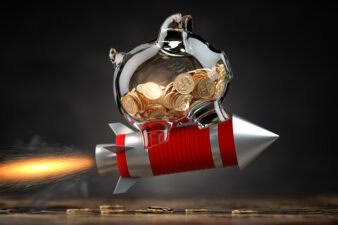Enbridge (TSX:ENB) stock has an 8.4% dividend yield. Among the highest yields of all large-cap TSX stocks, it’s enough to generate thousands of dollars per year in passive income. If you invest $500,000 into ENB stock, you’ll get $42,000 in annual cash back, if the yield doesn’t change. Historically, the yield has, in fact, changed in a good way: it has risen. Over the last 10 years, Enbridge’s management has raised the stock’s dividend by 12% per year. Investors who got in early were well rewarded.
One amazing fact about ENB’s high yield is that it is even higher than that of Enbridge’s preferred shares. Preferred shares are a special type of share where the dividends get paid before common shareholders’ dividends do. However, the dividend doesn’t usually rise over time. Because of this characteristic, preferred shares usually have higher yields than common shares in the same company.
Enbridge’s Series “A” preferred shares currently have a 7.05% yield. In other words, they currently have a lower yield than the common shares! This is an unusual situation for a company to be in. In this article, I will explore why Enbridge stock has such a high yield and whether the yield is sustainable.
Why ENB stock has such a high yield
Enbridge stock has a high yield for two reasons:
- The shares have been falling in price.
- Management keeps increasing the stock’s dividend.
Whenever a stock price falls, its dividend yield rises if the dividend isn’t cut. In Enbridge’s case, the dividend actually increased a lot while the stock price fell. So, the stock now has an utterly staggering yield.
Is the dividend at risk of being cut?
Having looked at all of Enbridge’s dividend increases, we can now move on to the all-important question:
“Is ENB’s payout at risk of being cut?”
Currently, Enbridge’s payout ratio is 120%. That means that the company pays out more in dividends than it earns in profit. That tends to indicate that the stock is having dividend sustainability issues. However, the payout ratio based on free cash flow rather than net income is slightly below 100%. The payout ratio using distributable cash flow (DCF) in the numerator is only 72%.
It’s a mixed picture on the whole. Enbridge, as a pipeline company, incurs enormous capital expenses each and every year. Just recently, it finished upgrading its Line III pipeline to a thicker pipe. It facilitated more crude oil volume but also incurred billions in costs. More recently, a U.S. judge ordered Enbridge to re-route one of its pipelines so that it doesn’t go over protected lands. That will cost a lot of money, too. Investors will want to keep an eye on these costs as they could result in Enbridge’s dividend being cut in the future.
The advantage of the preferred shares
Having explored Enbridge’s common shares and its dividend payout, it’s time to answer the question, “What’s the advantage of the preferred shares?”
Put simply, they’re safer. Preferred shares enjoy better legal standing compared to common shares; their payment takes priority over the payment of common share dividends. They normally have higher yields than common shares do, because their dividends don’t grow and, therefore, are seen as less desirable. Investors today seem to think that ENB’s cost and payout sustainability issues outweigh the potential for dividend growth. So, ENB’s preferred shares are seen as less risky and have a lower yield for that reason.







